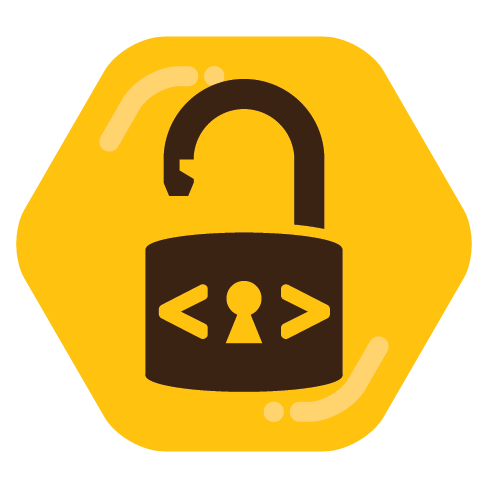

Many thx. Worked fine.
If I install a new kernel, I have to recreate the entries with grub-mkconfig -o /boot/grub/grub.cfg. But do I have to do that also for kernel updates?
I don’t think so, because the filename should not change, if I’m right?


Many thx. Worked fine.
If I install a new kernel, I have to recreate the entries with grub-mkconfig -o /boot/grub/grub.cfg. But do I have to do that also for kernel updates?
I don’t think so, because the filename should not change, if I’m right?


Ahh ok. Since in this case the script should only run at start and then exit, I use oneshot. Many thx.


Yep, I know. But when I only depend on
After=network-online.target
Wants=network-online.target
this doesn’t mean, I have a working internet connection. That’s why the loop.
Or is that wrong?


What’s the difference between oneshot and simple?


Nice. I will try the systemd unit. Meanwhile, i have added a loop in the script, which helps a little bit:
maxwait=15
if [[ $(nm-online -x) != *"online"* ]]; then
echo "missing internet connection, waiting..."
for (( i = 1; i <= maxwait; ++i )); do
sleep 1 &
echo $i
if [[ $(nm-online -x) == *"online"* ]]; then
break
fi
if [[ $i -eq $maxwait ]]; then
echo "No internet connection"
exit 1
fi
wait
done
fi
In my test, this exits the script after 15 seconds without connection, but continues, when the connection is available or is established within this time.
But i think, its a nice idea, to add this to the script AND use the systemd unit together.
Many thx. I hadn’t referred to groups, but at least that’s how it makes sense.


I uninstalled Steam with pacman -Runs steam. After that there were still several folders within my home. I removed these and then installed steam with pacman -Syu steam aga in. Luckily I didn’t need to reinstall the games as they are installed on a separate partition. I simply remounted the library and can now start the games without any error messages. Thanks for your help.
BTW: Whats the difference between pacman -Rns and pacman -Runs? What does u mean?
Do you know which locations, i have to remove?


Cromite, KeepassDX, Moshidon, Phone, K9
Unfortunately, logrotate does not work the way I would like it to. I have now created a bash script, which hopefully does what it is supposed to do:
#!/bin/bash
keepCount=30
files=($(ls *.db))
fileCount=${#files[@]}
for (( i=0; i<$fileCount; i++ )); do
database="${files[$i]}"
dbarr=($(ls -t $database.*))
for index in "${!dbarr[@]}"; do
p=$((index+1))
if [ $p -gt $keepCount ]; then
rm ${dbarr[$index]}
fi
done
done
Invoked in the respective directory, all *.db files are read into an array, as there can be different DBs per user. The array is then processed in a loop. First, the backup files for the respective DB are read into the array again, sorted by age. This array is then processed and all files whose index +1 is greater than keepCount are removed. This means that the oldest files are always removed and only those that are defined in the keepCount are kept.
Its a little bit more complicated, but it seems to do the job.


Many thx for the hint with to reset the filter. Indeed this worked. Now the selection works as expected.


USB Debugging is disabled, when im travelling. I had two such situations last week. At the first, i had enough time to shutdown and lock the device, before that. But the second time, they asked to unlock the device. I have no idea, if they can force me to do that, when a password is set, instead of only a fingerprint. But i don’t want to risk anything. Its not that i have to hide something. There is nothing on the phone what is not allowed. Only 2 VPN connections, which is not that good in China and some other countries. One for access to my home network and the other which i use in public networks.
I don’t want to have any problems with the authorities (in any country). As long as I don’t have to hand over the device, they can have a look at what’s on the phone. But I also don’t want anything to be installed that doesn’t belong there and I want to use my VPN the way I want to.
The second situation, was the first time in my travelling, when someone asked me to unlock the device. They didn’t take it with them after unlocking it (unlike the situation where it wasn’t unlocked) but I don’t see what could stop them from doing so.


That’s not the point. I travel a lot and here the phone is occasionally checked by the local authorities. I have no control over what the Chinese authorities do with the phone when they take it with them. Needless to say, I don’t plug the phone into any USB ports myself. The fact that apps from the Playstore are not affected by this is also OK, but I have installed very few apps via the Playstore, most of them are from F-Droid.
To make a long story short: There were several such situations on my last trip and I was happy that I had this “Auto Blocker” active. But it’s not a permanent solution.
Many thx. This is exactly what I want. Will try that when I’m batch from vacation.


Good point. Will try that


Hmm this is close enough to mine… Manjaro…
have Arch in parallel boot, but I’m not happy how it works with Steam Games. This is at least for me, a lot better with Manjaro. But anyway, I will compare with Arch settings next time im on it. Tomorrow I have to go to Bangkok for some weeks and can’t use my private laptop for this time.


Strange. I’m on Gnome 47.4. Is this XFCE in your screenshot?
And how could you add a image here? I have tried, but couldn’t find a button to do so.


256x256px. In my eyes, this should be ok.
On mobile im using Cromite. At least for me very useful. I haven’t tested it fully for privacy, but I don’t see any unexpected http requests to spooky Google services or similar thing’s.
I have one additional question. Sorry. According to the wiki I should use
grub-mkconfig -o /boot/grub/grub.cfgto generate a new menu after removing or installing other kernels. But obviously/boot/grub/grub.cfgis wrong, at least for me (the subdir grub doesnt exist here). In my case the file is under/efi/grub/grub.cfg. Is that also OK? When mounting ESP I followed https://wiki.archlinux.org/title/EFI_system_partition#Mount_the_partition#Typical_mount_points and chose the 2nd variant.